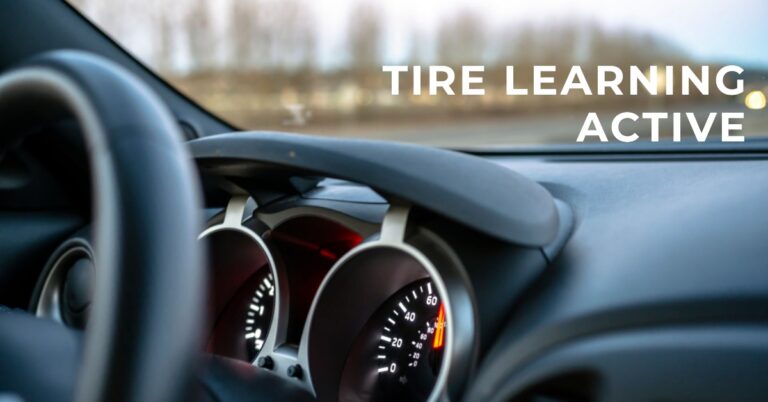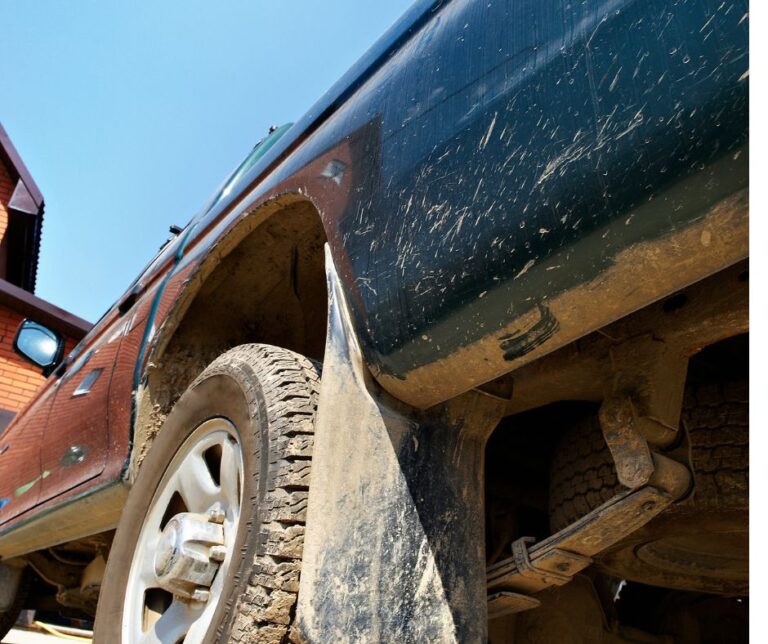Can I Put Wider Tires On My Stock Rims

Putting wider tires on your stock rims can be a great way to improve the performance and look of your vehicle. It can also give you more traction, better steering response, and improved ride quality.
But it’s important to understand the potential drawbacks and safety considerations before investing in wider tires for your stock rims.
In this article, we’ll explore the advantages and disadvantages of using wider tires on stock rims, what tire size is recommended for stock rims, how to properly install them, and what safety considerations are important when making this upgrade.
Table of Contents
- Advantages of Wider Tires
- Disadvantages of Wider Tires on Stock Rims
- What Tire Size Can I Put on My Stock Rims?
- How to Put Wider Tires on Stock Rims
- Safety Considerations of Wider Tires on Stock Rims
- Frequently Asked Questions
- How Much Weight Can Wider Tires on Stock Rims Handle?
- What is the Maximum Recommended Width for Tires on Stock Rims?
- How Much Will Wider Tires Affect My Gas Mileage?
- How Much More Difficult is it to Change a Tire with a Larger Width?
- Are There Any Special Considerations When Installing Wider Tires on Stock Rims?
- Conclusion
Advantages of Wider Tires
You can reap the benefits of wider tires on your current rims, allowing for a smoother ride and improved cornering.
Wider tires offer more traction control than narrow ones, while their increased weight helps grip the road better. This gives you more control when driving in wet conditions or on uneven terrain, which is especially helpful to those who live in areas with a lot of rain or snow.
They also provide longer tire wear due to their increased contact with the road surface, making them ideal if you’re looking for reliability and longevity from your tires.
With all these advantages, however, it’s important to consider the potential disadvantages before making any changes to your stock wheels and tires.
Disadvantages of Wider Tires on Stock Rims
Wider tires on stock rims can cause major headaches – don’t risk it! Installing wider tires than the factory-recommended size can put additional strain and stress on your stock rims, leading to a decrease in tire pressure. This, in turn, will result in uneven tire wear as well as excessive wear on the sidewalls of the tires.
Moreover, depending on the size of the wider tires you’re installing, they may not fit onto your vehicle’s rim properly. This could potentially lead to dangerous driving conditions due to lack of stability.
Overall, it’s not recommended to install wider tires onto stock rims as it poses safety concerns and may end up costing more money in the long run for repairs or new wheels. To ensure optimal performance and safe driving conditions, make sure that any changes made to your tire size are done with caution. This way, you can avoid potential damage from occurring.
What Tire Size Can I Put on My Stock Rims?
Are you unsure of what tire size is best for your vehicle’s stock rims? Don’t worry, with the right research and caution, you can make sure that whatever tires you choose will work with your wheels!
But before making any changes, don’t forget to ask yourself: Is my safety worth the risk? It’s important to understand that while larger tires may look better on your car, they can cause wheel balancing issues and improper tire inflation.
If you’re considering installing wider tires on your stock rims, it’s essential that you do some research into what tire choices are available for the specific make and model of your car. Look for reviews from other drivers who have successfully installed similar sizes of tires onto their stock rims to get an idea of how it could affect performance.
Once you’ve made a decision about tire size, be sure to get a professional opinion to ensure proper installation and safe driving conditions. Before attempting any modifications or changing out parts on your own, always weigh the risks against the rewards carefully.
Thinking ahead about potential problems will help keep both you and your vehicle safe as you transition into using wider tires on stock rims.
How to Put Wider Tires on Stock Rims
Installing wider tires on stock rims can be a tricky process, requiring careful consideration of potential risks and rewards.
To begin, it’s important to understand that the stock rim size may not support the tire size you’re looking for, so make sure to check with your mechanic or manufacturer before attempting any modifications.
The big benefit of installing wider tires is that they provide a bigger footprint which gives improved grip in turns and improves the overall handling of your car.
It’s important to ensure proper inflation and tire pressure when installing wider tires on stock rims to avoid any misalignment issues or damage that could occur from over-inflating.
Additionally, it’s best practice to have any wheel changes done by a professional if possible, as this will ensure correct installation for both safety and performance.
Safety Considerations of Wider Tires on Stock Rims
Navigating the roads with wider tires on stock rims can be a thrilling yet risky endeavor, so it’s important to consider safety first. When fitting wider tires to stock rims, there are several factors which can affect your driving experience and safety on the road:
- Improving Traction – Wider tires can provide improved traction when cornering or in wet conditions. This is particularly advantageous if you live in an area that experiences a lot of rain or snow.
- Rolling Resistance – Wider tires typically have a higher rolling resistance than narrower ones, meaning they require more energy to move them forward at the same speed as narrower tires do. This could mean slower acceleration and longer stopping distances on uneven surfaces.
- Wear Rate – Wider tires wear out faster than narrower ones due to increased friction against the road surface and heavier loads being put through them when cornering or accelerating from standstill.
- Load Capacity – You should also check that the load capacity of your car is not exceeded by fitting larger, wider tires as this could lead to instability under certain driving conditions such as cornering at high speeds or sudden emergency braking maneuvers.
Overall, while wider tires may offer some improvements in terms of grip and handling, it’s important to take into account any potential safety risks before making any modifications to your vehicle’s wheels and tires.
Frequently Asked Questions
How Much Weight Can Wider Tires on Stock Rims Handle?
When considering changing tire pressure, it’s important to evaluate safety and balance weight. It’s crucial to consider the maximum amount of weight that wider tires on stock rims can handle.
It’s possible to increase tire size, but the total load capacity must remain within manufacturer specifications to avoid creating safety hazards.
A qualified mechanic should be consulted to assess how much additional weight each individual tire can safely support.
Drivers should also regularly check their vehicle’s recommended tire pressure and adjust it accordingly for maximum performance.
What is the Maximum Recommended Width for Tires on Stock Rims?
When it comes to choosing the right size tires for your stock rims, the maximum recommended width is typically between 205 and 225 millimeters.
Wider tires offer a number of benefits over narrower ones, such as longer lasting treads, higher traction in wet conditions, and better handling on curves.
It’s important to remember that wider tires can put more strain on your stock rims than they’re designed for, so it’s always best to consult with an expert before making any changes.
How Much Will Wider Tires Affect My Gas Mileage?
Wider tires can have a significant effect on your gas mileage. The rolling resistance of the tire increases as its width increases, resulting in less efficient acceleration and fuel efficiency.
Tire alignment is also important and a wider tire may require adjustments to ensure proper tracking and contact with the road surface. In addition, suspension wear can be accelerated by wider tires if they don’t match the vehicle’s design specifications.
It’s best to consult an expert mechanic or tire specialist to make sure that any modifications are safe for your vehicle before making any changes.
How Much More Difficult is it to Change a Tire with a Larger Width?
Changing a tire with a wider width can be more difficult and time-consuming, but it can also provide more benefits to your vehicle.
I remember when I changed my tires from a narrower width to a wider one, the difference was quite noticeable. Not only did the wider width make me feel safer on the roads, but it also improved my car’s performance in terms of tire wear and road safety.
The wider width allowed for better grip and handling while taking corners and made maneuvering through traffic smoother. Although changing tires with larger widths takes longer than narrower ones, it’s well worth the effort if you want better performance and safety from your car.
Are There Any Special Considerations When Installing Wider Tires on Stock Rims?
When installing wider tires on stock rims, there are several special considerations to take into account.
Tire balancing and tire pressure are both important factors that can affect the performance of your vehicle. Improperly balanced tires can cause vibrations in the steering wheel, while incorrect tire pressure can reduce traction, braking and fuel efficiency.
Wheel alignment is also necessary when fitting wider tires to ensure they wear evenly and have optimum contact with the road surface.
All these considerations should be taken into account when fitting wider tires onto stock rims for optimal performance and safety.
Conclusion
After considering all the factors, it’s clear that wider tires can have some advantages for your car. However, if you’re using stock rims, there are a few drawbacks to be aware of.
It’s important to understand what tire size is compatible with your vehicle and how to properly install them on the rim before making any modifications. Taking all safety considerations into account will help ensure that you get the most out of your new tires without sacrificing performance or risking damage to your vehicle.
Ultimately, investing in wider tires can be a great way to upgrade your ride – but make sure you do it right!






